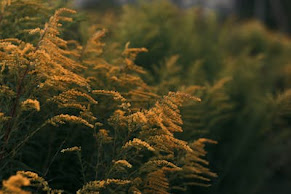Pollinator Plants
Pollinator plants are the unsung heroes of our ecosystems, supporting not just the bees, butterflies, and birds we love to watch, but also the fruits and vegetables we rely on. By cultivating a pollinator-friendly garden, you’re not only creating a haven of beauty and life—you’re playing a vital role in sustaining biodiversity. So grab your gloves and a trowel; it’s time to dive into the enchanting world of pollinator plants!
The Pollinator Plant Palette
Creating a pollinator garden begins with choosing plants that offer nectar and pollen to your flying friends. Here are some standout selections to consider:
1. Milkweed (Asclepias spp.)
True to its name, bee balm is a magnet for bees, butterflies, and even hummingbirds. Its fragrant, tubular flowers in shades of red, pink, and purple bring a touch of wild whimsy to any garden.
Side Note: Bee balm is prone to powdery mildew, especially in humid climates, so ensure proper spacing and airflow.
3. Lavender (Lavandula spp.)
Beloved for its soothing fragrance, lavender is a favorite among bees. Plant it in a sunny spot, and enjoy the calming buzz as they feast on its nectar-rich blooms.
Side Note: Lavender prefers well-draining soil and can struggle in areas with heavy clay or excessive moisture.
4. Coneflowers (Echinacea spp.)
My personal favorite for their beauty and resilience. These hardy perennials are a delight to pollinators and gardeners alike. Their vibrant, daisy-like flowers bloom for weeks, providing a reliable nectar source.
Side Note: Coneflowers can attract aphids and other pests, so keep an eye out for infestations.
5. Sunflowers (Helianthus spp.)
Cheerful and towering, sunflowers are a favorite of bees and birds. Their large, pollen-packed centers make them an irresistible stop for hungry pollinators.
Side Note: Sunflowers can attract squirrels and birds that may feast on the seeds before you can enjoy them.
6. Goldenrod (Solidago spp.)
Often mistaken for an allergy culprit, goldenrod is actually a fantastic late-season nectar source, attracting a flurry of pollinators as summer wanes.
Side Note: Goldenrod can spread aggressively in gardens, so choose clump-forming varieties or dedicate a controlled area for it.
Designing for Pollinators
When planning your garden, keep these tips in mind to maximize its pollinator appeal:
Plant in clusters: Grouping similar flowers together makes it easier for pollinators to find and collect nectar.
Go native: Native plants are best adapted to your local pollinators and often require less maintenance.
Provide a bloom buffet: Aim for a mix of plants that flower at different times, ensuring a steady food source from spring to fall.
Skip the pesticides: Many chemicals harm pollinators, so opt for natural pest control methods instead.
Add water: A shallow dish with fresh water and some stones for perching creates a refreshing drink station for thirsty visitors.
Beyond the Blooms
Pollinator-friendly gardening isn’t just about the flowers. Incorporating trees, shrubs, and even patches of bare soil can enhance your garden’s appeal. Trees like dogwood and redbud provide early-season nectar, while shrubs such as elderberry and viburnum offer food and shelter. Bare soil is essential for ground-nesting bees, while a few strategically placed rocks or logs can serve as sunbathing spots for butterflies.
The Joy of a Pollinator Garden
There’s a certain magic in watching your garden come alive with the flutter of wings and the gentle hum of bees. It’s a reminder of the interconnectedness of all life and a testament to the power of even small actions to make a big difference. As your pollinator garden flourishes, you’ll find yourself not only a steward of nature but also a beneficiary of its gifts: thriving plants, abundant harvests, and the sheer delight of nature’s beauty.
So, what will you plant to invite pollinators into your garden? Whether it’s a bed of cheerful sunflowers or a border of fragrant lavender, your efforts will create a little oasis for the creatures that make our world bloom. Happy gardening!









Comments
Post a Comment